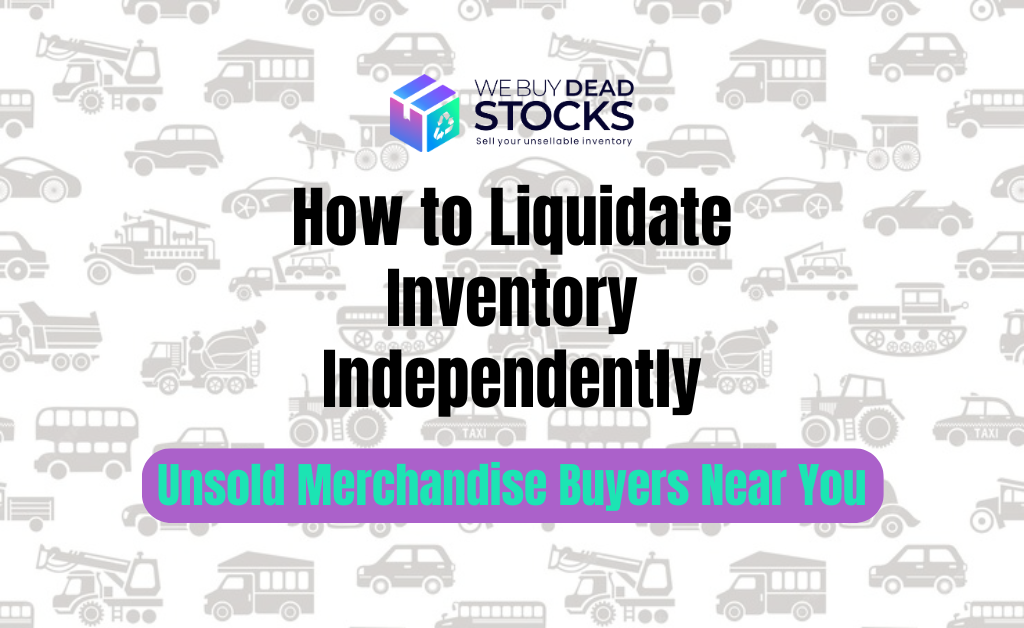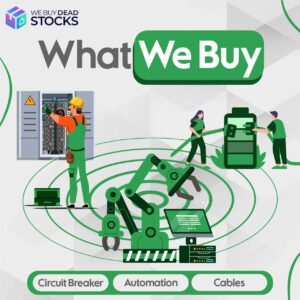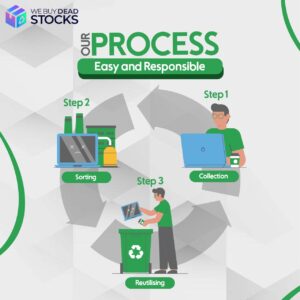Is your storeroom a cluttered warzone overflowing with unsold items? Excess inventory, those stubborn items refusing to budge, can be a major headache. This is not just a matter of messy shelves and forgotten boxes because excess inventory represents a major drain on resources. If you’re struggling to manage excess inventory, it’s time to take action and liquidate inventory efficiently. Don’t let those items weigh you down any longer! It;
- Wastes Valuable Space:
That prime real estate in your store or warehouse could be used for so much more like for displaying hot-selling products, storing new inventory, or even creating a more welcoming shopping experience for your customers.
- Ties Up Cash Flow:
Every unsold item on your shelves represents capital that’s not readily available. This can hinder your ability to invest in growth opportunities, pay bills on time, or adapt to changing market demands.
- Breeds Obsolescence:
The longer items sit unsold, the greater the risk they become outdated or damaged. As a result, you could end up stuck with outdated merchandise that has little to no resale value.
But fear not, there’s a solution: liquidate inventory. By strategically selling off unwanted stock, you can transform that clutter into much-needed cash for your business.
Liquidation isn’t just about a quick-fire sale. It’s a strategic process that allows you to reclaim control of your inventory. This comprehensive guide will help you to become a liquidation pro, and in tackling the process independently. We’ll explore the benefits, strategies, and resources you need to liquidate inventory and find unsold merchandise buyers right near you.
Understanding the Need to Liquidate Inventory:
Liquidation is the process of selling off excess inventory, typically at a discount, to convert those items into cash quickly. Tackling with the issues mentioned before, here are some reasons why you need to liquidate inventory:
- Free Up Space:
Clear out that jammed space to make way for hot-selling products or exciting new inventory.
- Cash Flow Boost:
Liquidation can give your business a much-needed financial shot in the arm. Use the extra cash to invest in growth or pay bills.
- Minimise Losses:
Don’t let slow-moving items become obsolete burdens. Therefore, liquidate them before they lose value and drag down your business.
Assessment and Valuation:
- Examining the inventory in detail is the first step. Excess inventory liquidators will take stock of the quantity, type, and condition of the items. This assessment helps determine the overall value of the inventory and plan the most effective sales strategy.
- Valuation:
After gaining a thorough grasp of the inventory, liquidators give each item a realistic market value. This valuation considers factors like original cost, current market trends, and the condition of the product.
Strategies to Liquidate Inventory Independently:
The beauty of independent liquidation is the variety of options at your disposal. Here are some proven strategies to consider:
- Discount Sales & Promotions:
Offer enticing discounts and markdowns to attract bargain hunters and move inventory quickly.
- Clearance Events & Flash Sales:
Create a sense of urgency with limited-time clearance sales. Advertise these events heavily to produce excitement and encourage fast sales.
- Targeted Advertising:
Don’t just throw your message out there and hope for the best. Customise your advertising according to your ideal customer base. Utilise social media advertising platforms to target demographics most likely to be interested in your liquidated items. For instance, if you are selling sports equipment, target local sports lovers on Facebook or Instagram.
Online Marketplaces and Auction Sites:
- The internet is a vast marketplace with potential buyers worldwide. Platforms like eBay, Amazon and Facebook Marketplace allow you to reach a wide audience. These platforms are ideal for selling individual items or smaller lots of similar items.
Tips for Online Success:
- Clear Photos:
Invest in high-quality photos with good lighting to showcase your products.
- Detailed Descriptions:
Provide accurate descriptions that highlight features, benefits, and the item’s condition. Be open and truthful about any deficiencies or errors.
- Competitive Pricing:
Research similar items online to determine fair market value and be willing to negotiate, especially during promotions.
Finding Unsold Merchandise Buyers Near You:
Utilise online platforms like Facebook buy-and-sell groups to connect with buyers in your areas. Here are some other effective strategies that you can consider too:
- Networking with Businesses:
Build relationships with other businesses in your area. Surplus equipment buyers could be a good fit for electronics or tools.
- Social Media & Local Classifieds:
Promote your liquidation sale through social media platforms like Facebook or Instagram. Additionally, utilize local classifieds websites or newspapers to reach a wider local audience.
- Liquidation Services:
While these services can be expensive for smaller liquidation efforts, they can be a valuable asset for businesses dealing with a large volume of excess inventory. Liquidation services handle the entire process, from marketing and sales to logistics and customer service.
Best Practices to Liquidate Inventory
To ensure a successful liquidation process, consider these best practices:
- Realistic Goals & Timelines:
Set realistic goals for how much inventory you want to sell and set a clear timeline for your liquidation efforts.
- Effective Promotions:
Effectively promote your sales events through various channels to reach a large audience and create buzz.
- Excellent Customer Service:
Provide excellent customer service to liquidate inventory. This includes being friendly, helpful, and responsive to buyer inquiries.
By following the strategies outlined in this blog, you’ve equipped yourself with the knowledge and tools to become an independent liquidation pro. Remember, successful liquidation is all about planning, execution, and maximising your return. Don’t be afraid to get creative and host themed sales, bundle products, or offer free local delivery for larger items. For more tips and exclusive deals, make sure to follow our Facebook page, We Buy Dead Stocks, where you can stay updated on the latest trends and opportunities in liquidation!
In conclusion, to liquidate inventory isn’t just about getting rid of unwanted stuff; it’s about creating new opportunities for your business. The cash you generate can be used to invest in new inventory, marketing initiatives, or even expanding your product line. In other words, by strategically utilising liquidation, you can transform a potential burden into a powerful tool for growth and success. So, roll up your sleeves, embrace your inner entrepreneur, and get ready to conquer that clutter! You might be surprised at the hidden value waiting to be unlocked within your excess inventory.





